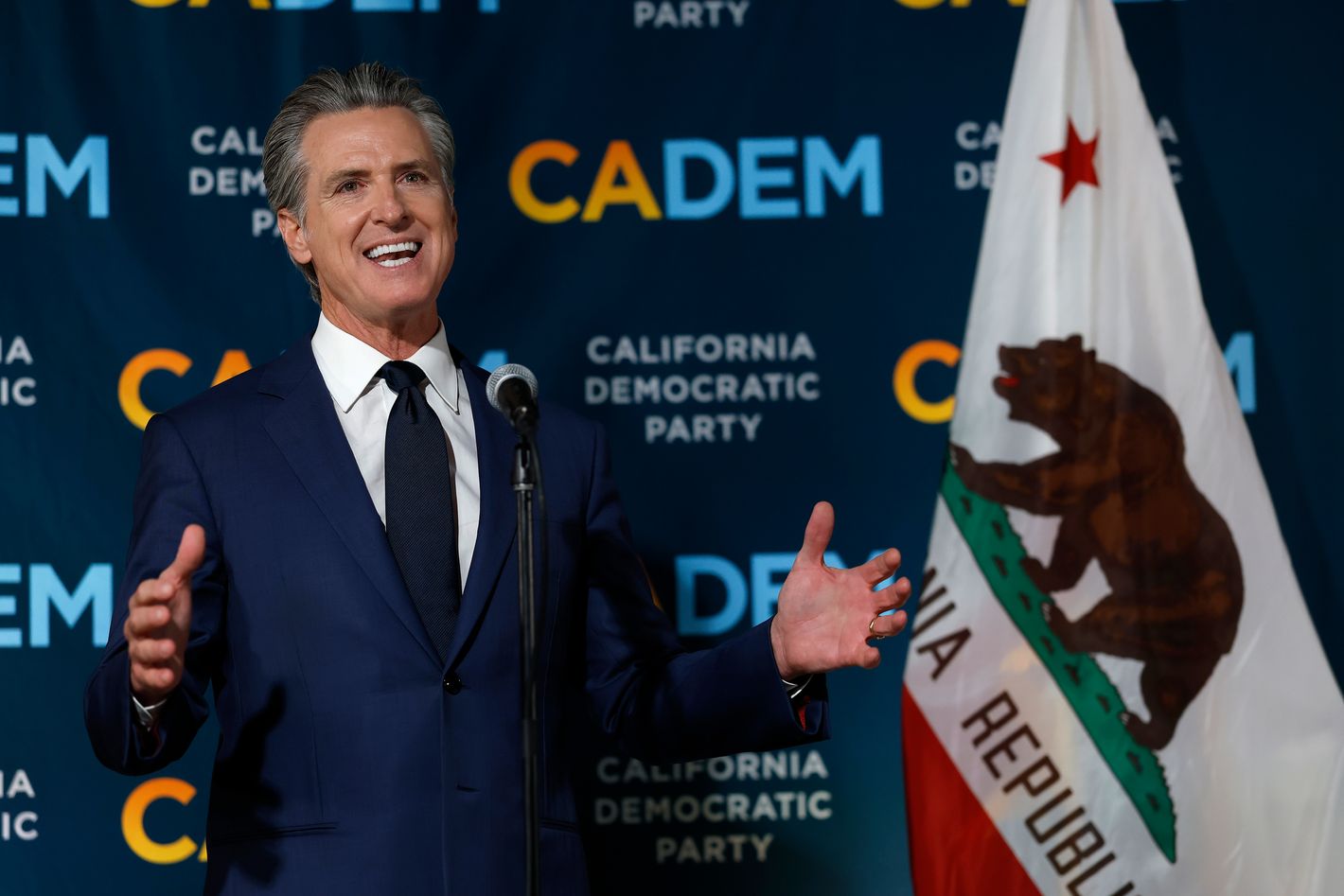
Photo: Justin Sullivan/Getty Images
Truth be told, when California Governor Gavin Newsom announced back on July 31 that he was going to pursue a constitutional amendment to retaliate against Donald Trump’s Texas gerrymandering power grab, I was very skeptical it could work.
First of all, it involved firing at a moving target. Though there was never any doubt Texas Republicans would do as they were told, the actual new congressional map wasn’t finally put into place until the end of August, nearly a month after Newsom made his move. Second of all, the time frame was really constrained: any proposed amendment had to clear the California legislature almost instantly, and then survive legal challenges. Third of all, the non-partisan citizens redistricting commission that Newsom wanted to push aside was well-established (created by voters in 2008 and extended to congressional redistricting two years later) and widely popular, particularly among Democrats and good government types. And fourth of all, he and his allies would have very little time to raise the vast funds necessary to explain this arcane issue to voters, persuade them to give redistricting (albeit temporarily) back to politicians, and mobilize them to vote in an off-year special election.
In addition, Newsom was picking a fight with one of the few Californians better known than himself: his predecessor Arnold Schwarzenegger, who regarded the non-partisan redistricting system as an important part of his own legacy.
Newsom and his allies (including virtually every Democratic pol in the state, along with national Democratic celebrities and pro-Democratic constituency groups, especially unions) methodically got the job done. They didn’t wait for the Texas power grab to be consummated before laying the groundwork for the ballot initiative, making it initially contingent on what happened in the Lone Star State. They went right ahead and secured legislative approval of an actual congressional map, so that voters could see what they were voting for instead of trusting the pols to get it right. Enough money was lined up to give Prop 50 (as it came to be known) a big financial advantage over its opponents (a coalition of Republicans and allegedly independent good government advocates). And most of all, Newsom and company settled quickly on a message that made Prop 50 a referendum on Donald Trump and his many terrible works.
The strategy closely resembled what Newsom did to defeat a Republican-led 2021 recall effort that would have removed him from office: making it a partisan contest in which the Democrats who outnumber Republicans about five to three in the Golden State would prevail if motivated and united. But beyond that, the Prop 50 campaign focused on Trump – not just the gerrymandering scheme the initiative countered, but his ongoing battle with California across a broad landscape of legal and policy issues. So while Prop 50 opponents were consigned to abstract arguments over complex systems for drafting and approving congressional maps, Prop 50 proponents could simply produce visceral and threatening images of a very unpopular president. And because Trump really did start the redistricting fight, Prop 50 could be presented as a righteous measure to prevent a proliferation of gerrymandering this year and on into the future. The campaign turned a retaliatory power grab into a good government measure of its own.
Prop 50 got some breaks, too. The “No on 50” coalition was divided on tactics and strategy between those who wanted to keep the high nonpartisan ground and those who wanted to demonize Newsom. Schwarzenegger, who was probably unhappy with any association, however indirect, with Trump (the nominally Republican actor went so far as to endorse Kamala Harris in 2024), gave the “No on 50” cause little more than lip service. And Trump himself seemed to be on his worst behavior in the months that preceded the vote.
In the end, it was no contest, but still, the numbers are remarkable. With 75 percent of the vote counted (California, which sends mail ballots to all registered voters, counts votes slowly), Prop 50 is leading by a margin of 63.8 percent to 36.2 percent, and the “yes” margin is likely to go up as a “blue shift” (the typical Democratic lean in the last-counted mail ballots) develops. That’s already a higher percentage of the vote than the last three Democratic presidential candidates secured in California, and for that matter, a higher percentage than Newsom’s in his two gubernatorial elections and his recall win. On a bad election night for Donald Trump, it was the largest and noisiest blow to the 47th president of them all. And most obviously, Prop 50, intended to flip five U.S. House seats, could pay major dividends in the 2026 midterms, particularly since Republican gerrymandering efforts are currently stalling in Indiana and Kansas.
The big win for Prop 50 will also boost Gavin Newsom’s all-but-certain 2028 presidential candidacy. To this Californian, it feels like Newsom has been running for that office for decades. But he deserves whatever juice he gets from his anti-Trump efforts in 2025. Prop 50 represented a master class in persuasion and a strategy executed to perfection. If Newsom’s future campaign is as competent, he’ll be in good shape.
From Intelligencer - Daily News, Politics, Business, and Tech via this RSS feed

